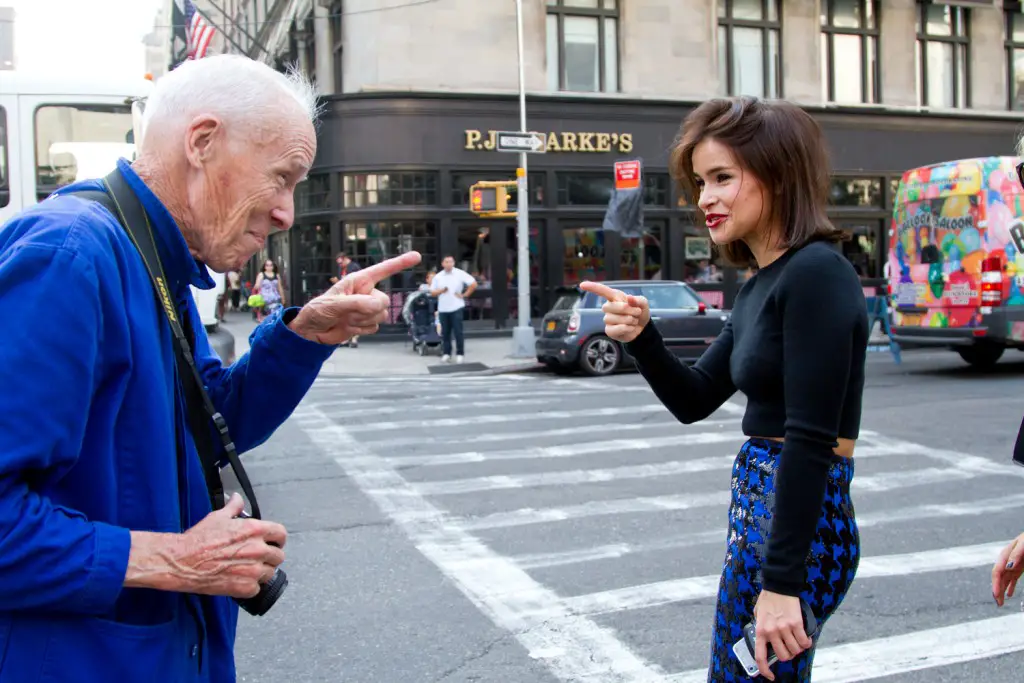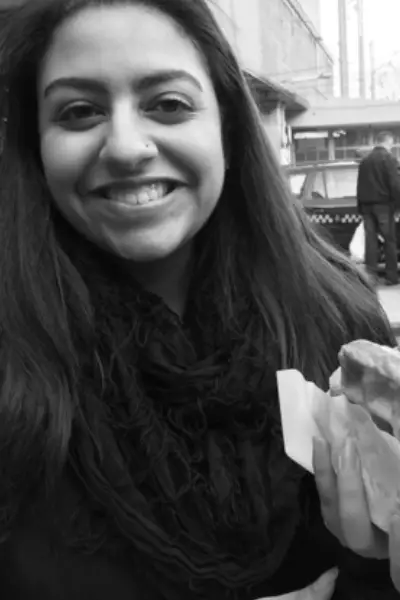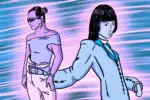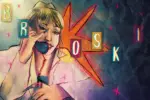Celebrating the Life of New York Icon Bill Cunningham
Renowned for identifying emergent trends on the streets of New York, Cunningham indelibly influenced the worlds of fashion and photography.
By Sofia Rivera, Simmons College
Bill Cunningham is not a particularly unusual name.
Wikipedia boasts 13 notable men who wear the title, two fictional and 11 real-life. The second Bill in the list is as unassuming as all the others: “Bill Cunningham (American photographer) (1929–2016), ‘The New York Times.’” But in verve for life and dedication to his art, Bill stands alone.
And though he never grew an ironic handlebar mustache and his unofficial uniform was a blue French workman’s jacket rather than an Urban Outfitter’s flannel, make no mistake: In the purest sense of the word, which is to say he saw trends before anyone else, Bill was a hipster. And no sooner did he see emerging fashions than his camera clicked and froze the New York moments for the world to see in the Sunday edition of “The Times.”
To those who knew him as the eclectic and careful curator of “The Times” “On the Street” fashion column, Bill probably seemed like a New York native. But he began life fairly typically, raised in Boston—as his accent gave away—in an Irish Catholic family and (maybe not so typically) attended Harvard University.
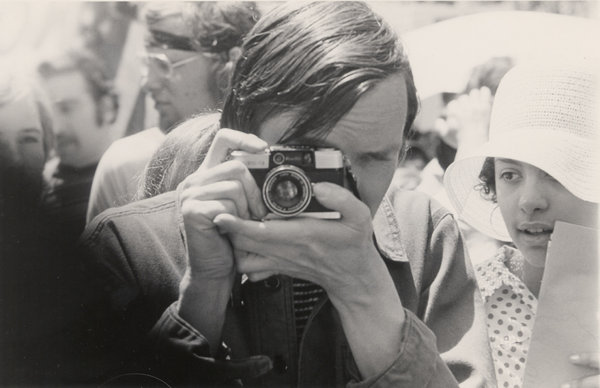 But he soon dropped out to pursue his passion for women’s hats, which is maybe the most hipster thing anyone has ever done. He moved to Manhattan where he opened his own hat shop and sold to nobodies like Marilyn Monroe, went on to write for the “Chicago Tribune” and “Women’s Wear Daily,” then began to write and eventually photograph for “The New York Times.”
But he soon dropped out to pursue his passion for women’s hats, which is maybe the most hipster thing anyone has ever done. He moved to Manhattan where he opened his own hat shop and sold to nobodies like Marilyn Monroe, went on to write for the “Chicago Tribune” and “Women’s Wear Daily,” then began to write and eventually photograph for “The New York Times.”
He was beloved by New York’s fashionistas, its elite, its waitresses and street-crossers, because he didn’t discriminate in his photography—he photographed “Vogue” editor Anna Wintor one second and hippies in Central Park the next, but not in an effort to be revolutionary. He simply delighted in the different. He loved the elegant, the flamboyant, the confidently worn.
He once said, “When I’m photographing, I look for the personal style with which something is worn—sometimes even how an umbrella is carried or how a coat is held closed. At parties, it’s important to be almost invisible, to catch people when they’re oblivious to the camera—to get the intensity of their speech, the gestures of their hands. I’m interested in capturing a moment with animation and spirit.”
In that he was on the mind of every fashion-thinking New Yorker, his desire for invisibility was wonderfully ironic. Anna Wintor famously claimed that “We all get dressed for Bill.” And though he worked behind the lens, he was always in the picture.
The way he photographed and what he chose to immortalize revealed who he was, how he saw fashion and the world. Each Sunday column—a handful of photos (a fraction of the number taken) meticulously selected and arranged—were a love letter to the city.
The city loved him back. So much so that the New York Mayor’s Office, following the news of Bill’s death, tweeted, “Today we lost a Living Landmark, not that he ever stood still. Let’s all be more fabulous in Bill’s memory.” Nearly 4,000 supporters have signed a petition to immortalize Bill’s footprint on the city by renaming 57th Street and Fifth Avenue “Bill Cunningham Corner.” The petition with be sent to another Bill, Mayor de Blasio, who tweeted, “We will remember Bill’s blue jacket and bicycle. But most of all we will remember the vivid, vivacious New York he captured in his photos.”
The spirit he captured and his uncanny ability to predict a trend before anyone else took note did not come quickly or easily. He’d spend hours out on the streets, zigzagging his bicycle across the city, remaining enthusiastic at elite charity events long after others had grown tired, and chasing women down the street for a closer look at what they were wearing. In the 2010 documentary “Bill Cunningham New York,” he says, “I don’t decide anything, I let the street speak to me, and in order for the street to speak to you, you’ve got to stay out there and see what it is!”
He also claimed to have no interest in “celebrities with their free dresses”—“I’m interested in clothes.” High fashion is great, but what will people actually buy and wear? How will they were it, and where and when? He was driven to answer these questions. He said once, “The best fashion show is definitely on the streets.”
Everyone and her sister has a friend who claims to be a photographer because she has an iPhone 6 (which takes shockingly crisp photos) or even a DSLR, but a nice camera doesn’t necessarily make someone a talented photographer. Bill isn’t a legend because of his camera or his technical skills or even his bicycle and bright blue jacket. He will be remembered for his indiscriminate eye, the kid-on-Christmas-morning excitement he brought to his work everyday, and the zeitgeist he immortalized time and again.
By all accounts he was a winsome, endlessly joyous man. In the documentary named after him (which he claims never to have seen), a younger, smiling Bill says, “Fashion is the armor to survive the reality of everyday life. I don’t think you could do away with it.” Giggling he adds, “At least that’s what I think!”
If the fashion world really is “The Devil Wears Prada”—and why wouldn’t it be, movies always tell the truth— he charmed the devil and photographed the Prada. He cared very little about things that matter very much to mainstream culture (so hipster), like class divisions or money. “If you don’t take money, they can’t tell you what to do, kid,” he once said. So for years he lived modestly in a tiny rent-controlled apartment above Carnegie Hall, where he shared a bathroom and happily sacrificed almost all of his living space for boxes of negatives. When he was kicked out and had to relocate, he quickly unhindered his new apartment of its kitchen so as to make room for actually important items, like photos.
He fervently claimed not to create the trends in fashion, just to observe and report them. But he was a trendsetter in the most important way: He was unapologetically himself and passionately celebrated people who expressed their individuality. If being hipster is doing something before anyone else, then that was Bill Cunningham. And if fashion is a way to express ourselves and to communicate the way we see the world—or want to see it—then maybe we should all get dressed for Bill.



